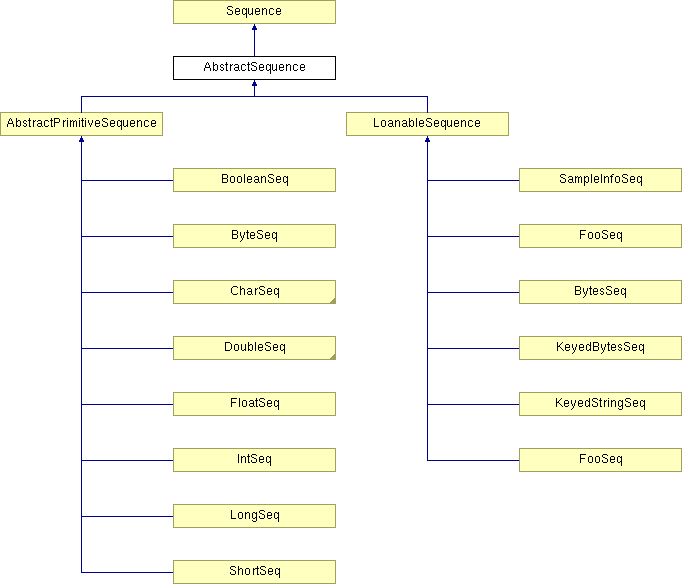AbstractSequence Class Reference
Abstract sequence. More...
Inheritance diagram for AbstractSequence:

Public Member Functions | |
| void | setMaximum (int new_max) |
| Resize this sequence to a new desired maximum. | |
| Class | getElementType () |
| void | add (int index, Object element) |
| Inserts the specified element at the specified position in this sequence. | |
| boolean | add (Object element) |
| Appends the specified element to the end of this sequence. | |
| final Object | remove (int index) |
| Remove the element at the given index by shifting all subsequent elements "left" by one. | |
Detailed Description
Abstract sequence.Member Function Documentation
| void setMaximum | ( | int | new_max | ) |
Resize this sequence to a new desired maximum.
This operation does nothing if the new desired maximum matches the current maximum.
Note: If you add an element with add(), the sequence's size is increased implicitly.
- Postcondition:
- length == MINIMUM(original length, new_max)
- Parameters:
-
new_max Must be >= 0.
- Returns:
- true on success, false if the preconditions are not met. In that case the sequence is not modified.
Implements Sequence.
Reimplemented in LoanableSequence.
| Class getElementType | ( | ) |
- Returns:
- a common supertype for all elements in this sequence.
Implements Sequence.
Reimplemented in AbstractPrimitiveSequence.
| void add | ( | int | index, | |
| Object | element | |||
| ) |
Inserts the specified element at the specified position in this sequence.
- See also:
- java.util.List.add(int, java.lang.Object)
Reimplemented in BooleanSeq, ByteSeq, CharSeq, DoubleSeq, FloatSeq, IntSeq, LongSeq, ShortSeq, and AbstractPrimitiveSequence.
| boolean add | ( | Object | element | ) |
Appends the specified element to the end of this sequence.
- See also:
- java.util.List.add(java.lang.Object)
| final Object remove | ( | int | index | ) |
Remove the element at the given index by shifting all subsequent elements "left" by one.
- See also:
- java.util.List.remove(int)